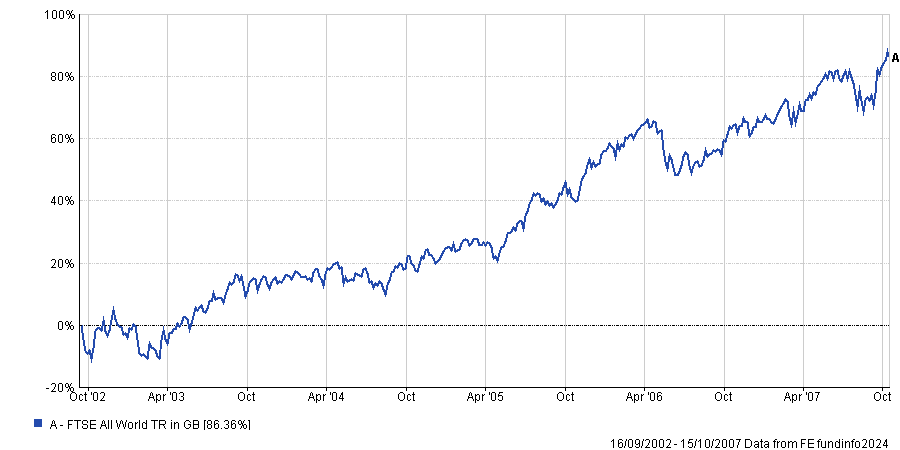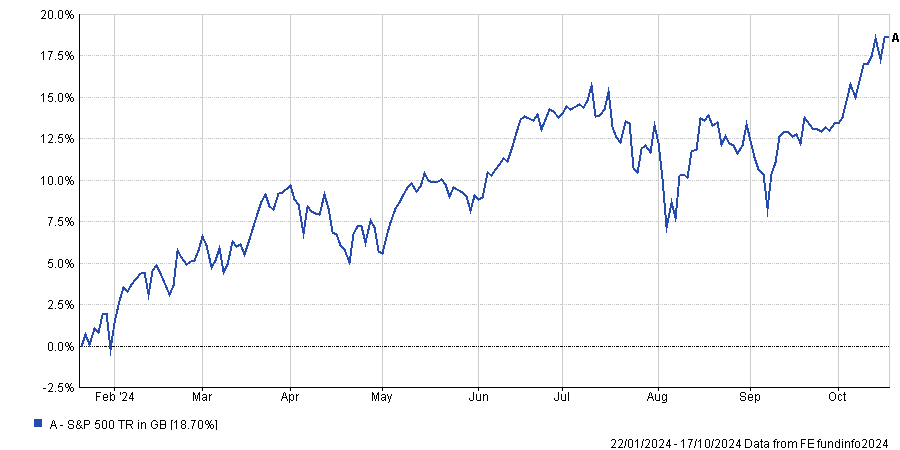Great value UK stocks: Where to find the biggest bargains
We ask the experts where they are seeing the best opportunities and flag three of our own ideas

The fact the UK market is cheap relative to its international peers is hardly new news to anyone who has been investing for a few years, and the reason usually given is the UK doesn’t have the same exposure to growth stocks as markets like the US.
When the bulk of the gains in the S&P 500 over the last couple of years have been generated by just half a big tech dozen stocks, that argument does seem pretty valid, but it still doesn’t explain why the UK as a whole is so undervalued.
Thomas Moore, manager of investment trust abrdn Equity Income (AEI), believes the problem lies with low investor expectations: ‘The UK is one of the most lowly-valued markets in the world. Side by side, UK companies tend to trade at lower valuations than US companies of comparable quality.’
However, the flip side of the coin is low expectations can be an opportunity for investors who are willing to go against the flow, says Moore.
‘If expectations are high, there is a risk that everything has to go right to justify the valuation. Even a small miss can cause a major wobble. By contrast, there is a decent chance that expectations are low enough for UK companies that even a small improvement in their operations could drive a valuation re-rating.’
Alex Wright, manager of Fidelity Special Values (FSV), argues the better-than-anticipated performance of the UK economy, and corporate earnings which have proved resilient in a global context – giving companies the confidence to buy back their own shares or launch takeovers – will start to draw more investors to the market.
‘Given the relatively robust performance of UK companies, it has been a surprise that we have not started to see the valuation gap between the UK and other global markets close. For us, this demonstrates the strong opportunity for savvy investors willing to invest in the UK market today,’ adds Wright.
ARE FALLING RATES A TAILWIND?
Considering ‘value’ stocks outperformed ‘growth’ stocks as interest rates rose in 2022, the idea they will outperform as rates fall seems somewhat counter-intuitive.
Surely lower interest rates are better for long-duration ‘growth’ stocks, as a lower discount rate brings forward more of the earnings from future years?
Not so, says Simon Adler, global value equity manager at Schroders (SDR). ‘While many believe cheaper companies perform better when rates are high, history shows this is not the case and that value has worked across many different rate environments. Ultimately it is starting valuations that have the biggest impact on future returns, regardless of the level and direction of rates.’
Redwheel’s Ian Lance, manager of Temple Bar (TMPL), concurs, calling it ‘somewhat of a myth that value cannot perform when rates are coming down’.
‘If you take the three periods in the last 25 years when value did really well – 2000 to 2005, after the TMT (technology, media and telecom) bubble burst; 2008 to 2010 after the GFC (global financial crisis); and from 2020 to 2022 – they all occurred when rates were falling.’
Also, says Lance, what all three starting points had in common was “a market dislocation which increased the spread in valuations between the cheapest and most expensive parts of the market’.
‘With TMT it was “sell anything old economy no matter how cheap in order to buy tech as that’s where the growth is”; in the GFC it was “flight to quality” because some people thought the financial world was coming to an end; and during the pandemic it was “sell anything cyclical no matter how cheap as lockdown would lead to a perma-recession”. In all three cases, the unwind of these narratives led to spectacular gains for “value” stocks.’
And, as Simon Gergel, manager of UK equity income fund Merchants Trust (MRCH) points out, ‘value’ stocks ‘tend to be more economically sensitive and cyclical than the average company, as investors will often pay a premium for companies with steady and reliable cashflows and profits growth’.
Therefore, at a fundamental level, ‘value’ shares ‘may do better when interest rates fall, as lower borrowing costs should help support the economy, benefitting more cyclical businesses’.
However, says Gergel, ‘We don’t find the categorisation of “value” and “growth” shares particularly helpful. We prefer to think about individual companies and whether they are cheap compared to our assessment of their fundamental worth, or intrinsic value.
‘Some highly-priced shares may offer good value if the company’s prospects are strong, and many lowly-priced companies will not offer value. Buying a second-hand car for a low sticker price does not guarantee you are getting good value.’
WHAT IS ‘INTRINSIC VALUE’?
For abrdn’s Moore and his colleagues, understanding the drivers of a company’s cash flows – which are essential for the dividends they can expect to receive as shareholders – is fundamental to determining its ‘intrinsic value’.
‘We look to identify companies whose cash flows and dividends have not been properly factored into their share prices’, continues Moore.
‘One of our largest holdings, Imperial Brands (IMB), has a new management team who have focused on improving the delivery of cash flows by concentrating on core markets. This has resulted in a turnaround in its profitability, allowing both a generous dividend and a significant share buyback programme.
‘Added together, the dividend and buyback represent a mid-teens total distribution yield. At this pace, it would not be long before the entire market capitalisation of the company has been returned to shareholders.’
Gary Shannon and the team at Aurora Investment Trust (ARR) are also firm adherents to the concept of intrinsic value and use discounted cash flow models to measure what they believe companies could ultimately be worth.
Each model is unique to each business, and by using different assumptions and inputs the team can create a range of outcomes, including what they call a ‘stresses scenario’, and only if there is a substantial ‘margin of safety’ in the current valuation will they pull the trigger.
‘We invest in a way and build a portfolio that will deliver whatever happens, because it doesn’t rely on macro or global factors,’ says Shannon.
‘Cheap stocks today are as attractively priced as they have been over the last 50 years,’ comments Schroders’ Adler.
‘Very few areas of the equity market are at a discount to their own history, but the cheapest 20% of listed companies globally are trading at roughly 10 times normalised earnings compared to circa 12 times since 1970. History shows these levels of starting valuations are a good thing for subsequent returns.’
WHAT ARE THE MANAGERS BUYING?
Redwheel’s Lance sees the most value in cyclical sectors such as energy, financials, retail and media, and is encouraged the level of corporate takeovers and share buybacks this year, both of which have driven sizeable gains in some companies.
Aurora’s managers are bullish on UK housebuilders and own shares in both Barratt Redrow (BTRW) and Bellway (BWY).
‘With inflation continuing to moderate, and interest rates starting to decline, mortgage rates have lowered and there is an increase in demand for mortgages and house buying, so volumes and prices have started to rise.
‘None of these developments have changed our central expectations of what will happen, but they have removed downside risks. If the Government succeeds in raising new housebuilding output, it will increase the upside,’ observe the managers.
Merchant’s Gergel is finding interesting value opportunities within in a broad range of sectors, including cyclical industries like housebuilding and building materials, real estate and parts of retail, as well as more defensive industries like utilities, tobacco and healthcare.
Schroders’ Adler says he sees compelling ideas trading on big discounts ‘across consumer-facing businesses, health care and telecoms, where the market has become overly fearful on company prospects, allowing us to pick up companies for far less than their worth’.
One example is Molson-Corrs (TAP:NYSE), the US alcohol business with a global leading beverage franchise across several markets. ‘The firm trades on low double-digit normalised earnings and is backed by a strong balance sheet on top of a world-class brand with a loyal customer base,’ says Adler.
‘Elsewhere, we have large health care companies trading on big discounts as the market is worried about the patent pipelines, despite robust balance sheets, very healthy R&D (research and development) spend with proven track records of innovation.’
Asset Value Investors’ Joe Bauernfreund, manager of AVI Global Trust (AGT), says he looks for three main characteristics when assessing a business: ‘a durable franchise which is growing in value; deeply discounted valuations; and catalysts to unlock and grow value, which includes our own activism.’
‘As things stand, discounts across all parts of our universe are wide by historical standards and we have constructed a concentrated-yet-diverse portfolio of companies with idiosyncratic catalysts and events to drive returns.
‘We believe this stands us in good stead, whatever the weather, with our largest holdings in (Belgian car parts distributor) D’Ieteren (DIE:EBR), News Corp (NWS:NASDAQ) and Chrysalis (CHRY) indicative of this approach.’





